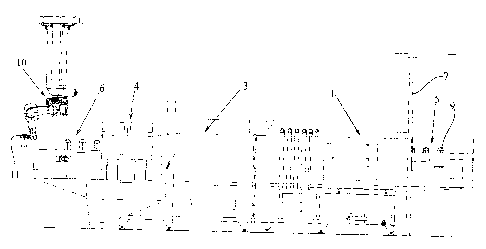Some of the information on this Web page has been provided by external sources. The Government of Canada is not responsible for the accuracy, reliability or currency of the information supplied by external sources. Users wishing to rely upon this information should consult directly with the source of the information. Content provided by external sources is not subject to official languages, privacy and accessibility requirements.
Any discrepancies in the text and image of the Claims and Abstract are due to differing posting times. Text of the Claims and Abstract are posted:
| (12) Patent: | (11) CA 2422664 |
|---|---|
| (54) English Title: | METHOD AND APPARATUS FOR EMPTYING BLOOD PLASMA CONTAINERS |
| (54) French Title: | METHODE ET APPAREILS POUR VIDER LES CONTENANTS DE PLASMA SANGUIN |
| Status: | Term Expired - Post Grant Beyond Limit |
| (51) International Patent Classification (IPC): |
|
|---|---|
| (72) Inventors : |
|
| (73) Owners : |
|
| (71) Applicants : |
|
| (74) Agent: | ROBIC AGENCE PI S.E.C./ROBIC IP AGENCY LP |
| (74) Associate agent: | |
| (45) Issued: | 2007-07-17 |
| (22) Filed Date: | 2003-03-19 |
| (41) Open to Public Inspection: | 2003-09-26 |
| Examination requested: | 2003-07-22 |
| Availability of licence: | N/A |
| Dedicated to the Public: | N/A |
| (25) Language of filing: | English |
| Patent Cooperation Treaty (PCT): | No |
|---|
| (30) Application Priority Data: | ||||||
|---|---|---|---|---|---|---|
|
The method comprises a first stage of formation of a batch of a specific number of full containers to be emptied, which are then subjected to an operation of external washing by spraying with hot, de-ionised water and a subsequent rinsing operation, likewise by spraying with de-ionised water, passing then to a step of drying of the containers and afterwards to a step of cutting off one end of the containers, which then pass to a gripping step, in the same number of containers that were arranged in the batch at the start of the method, these being inverted to permit the fall and collection of the masses of plasma.
La méthode comprend la première étape de formation d'un ensemble de contenants pleins en nombre précis, qui doivent être vidés, afin d'être soumis à un nettoyage externe en les aspergeant d'eau chaude désionisée, puis à une étape de rinçage, également en les aspergeant d'eau désionisée, pour ensuite passer à l'étape de séchage des contenants, puis à une étape de découpage de l'une des extrémités des contenants, qui passent finalement à une étape de saisie, l'ensemble comportant le même nombre de contenants qu'au début de la méthode, mais sens dessus dessous de sorte à permettre la chute et le ramassage des masses de plasma.
Note: Claims are shown in the official language in which they were submitted.
Note: Descriptions are shown in the official language in which they were submitted.

2024-08-01:As part of the Next Generation Patents (NGP) transition, the Canadian Patents Database (CPD) now contains a more detailed Event History, which replicates the Event Log of our new back-office solution.
Please note that "Inactive:" events refers to events no longer in use in our new back-office solution.
For a clearer understanding of the status of the application/patent presented on this page, the site Disclaimer , as well as the definitions for Patent , Event History , Maintenance Fee and Payment History should be consulted.
| Description | Date |
|---|---|
| Inactive: Expired (new Act pat) | 2023-03-20 |
| Common Representative Appointed | 2019-10-30 |
| Common Representative Appointed | 2019-10-30 |
| Change of Address or Method of Correspondence Request Received | 2018-12-04 |
| Maintenance Request Received | 2015-02-12 |
| Maintenance Request Received | 2014-02-11 |
| Maintenance Request Received | 2013-02-14 |
| Inactive: Correspondence - MF | 2010-08-10 |
| Inactive: Office letter | 2010-06-21 |
| Inactive: Correspondence - Transfer | 2010-05-11 |
| Inactive: Correspondence - Transfer | 2009-12-22 |
| Grant by Issuance | 2007-07-17 |
| Inactive: Cover page published | 2007-07-16 |
| Pre-grant | 2007-05-04 |
| Inactive: Final fee received | 2007-05-04 |
| Notice of Allowance is Issued | 2007-03-27 |
| Letter Sent | 2007-03-27 |
| Notice of Allowance is Issued | 2007-03-27 |
| Inactive: IPC removed | 2007-03-20 |
| Inactive: Approved for allowance (AFA) | 2007-02-19 |
| Amendment Received - Voluntary Amendment | 2006-09-01 |
| Inactive: S.30(2) Rules - Examiner requisition | 2006-06-07 |
| Inactive: IPC from MCD | 2006-03-12 |
| Inactive: IPC from MCD | 2006-03-12 |
| Letter Sent | 2005-12-15 |
| Inactive: Multiple transfers | 2005-11-22 |
| Application Published (Open to Public Inspection) | 2003-09-26 |
| Inactive: Cover page published | 2003-09-25 |
| Letter Sent | 2003-08-22 |
| All Requirements for Examination Determined Compliant | 2003-07-22 |
| Request for Examination Requirements Determined Compliant | 2003-07-22 |
| Request for Examination Received | 2003-07-22 |
| Inactive: IPC assigned | 2003-05-02 |
| Inactive: First IPC assigned | 2003-05-02 |
| Inactive: Filing certificate - No RFE (English) | 2003-04-15 |
| Filing Requirements Determined Compliant | 2003-04-15 |
| Letter Sent | 2003-04-15 |
| Application Received - Regular National | 2003-04-14 |
There is no abandonment history.
The last payment was received on 2007-02-01
Note : If the full payment has not been received on or before the date indicated, a further fee may be required which may be one of the following
Please refer to the CIPO Patent Fees web page to see all current fee amounts.
Note: Records showing the ownership history in alphabetical order.
| Current Owners on Record |
|---|
| GRIFOLS, S.A. |
| Past Owners on Record |
|---|
| JOSE RAMON SANCHEZ SABATE |
| SERGI ROURA ADELL |
| VICTOR GRIFOLS LUCAS |